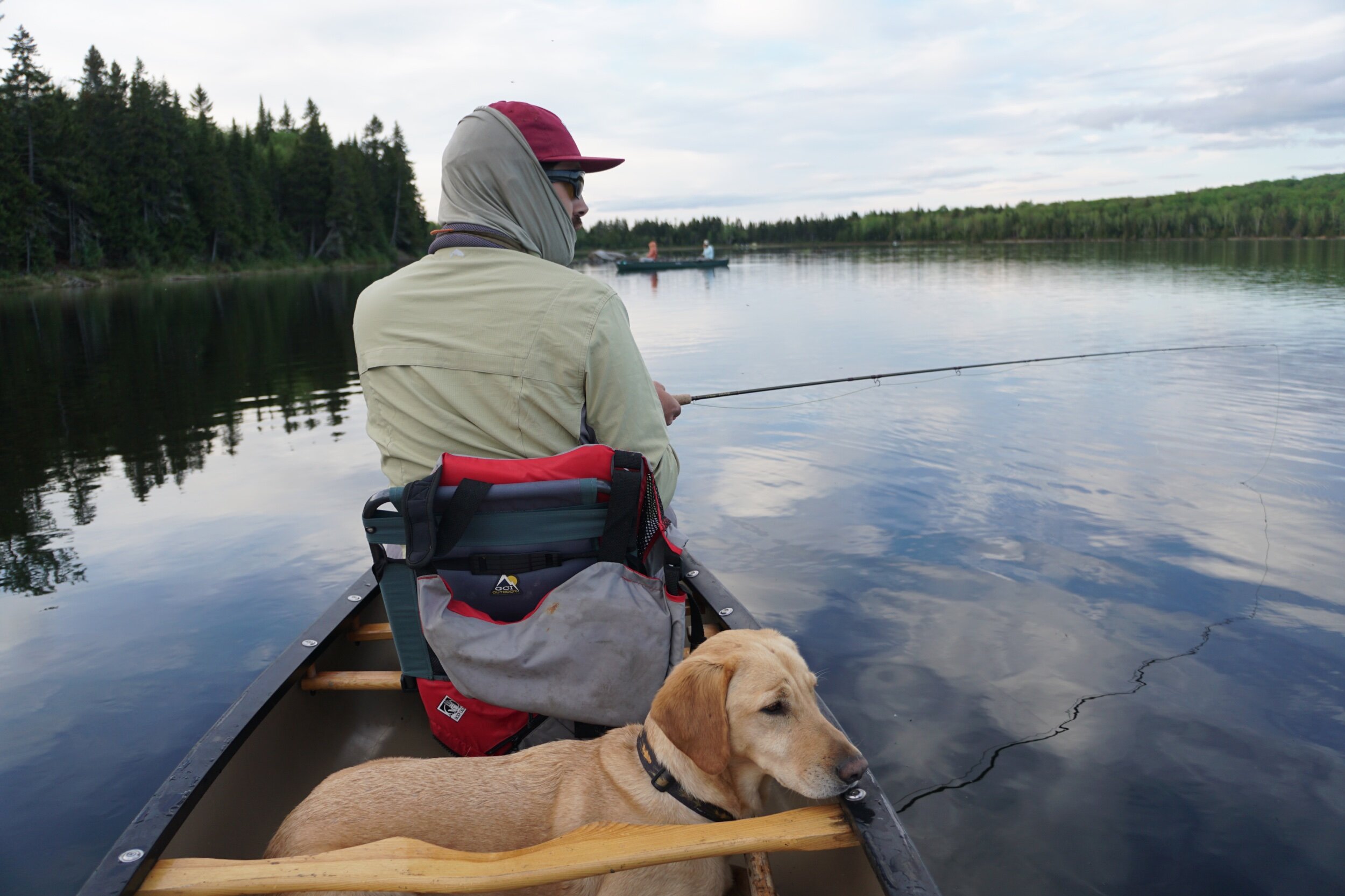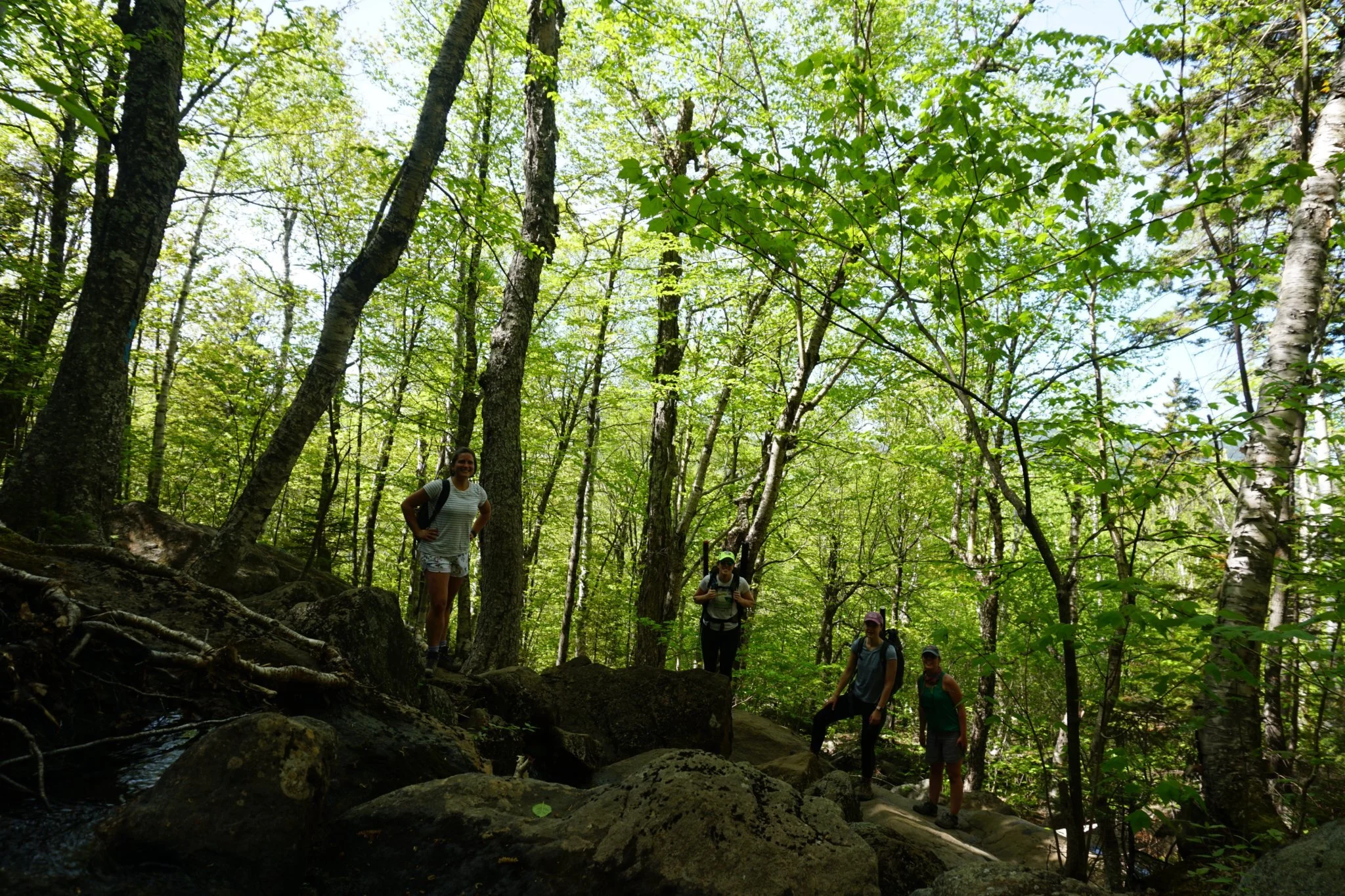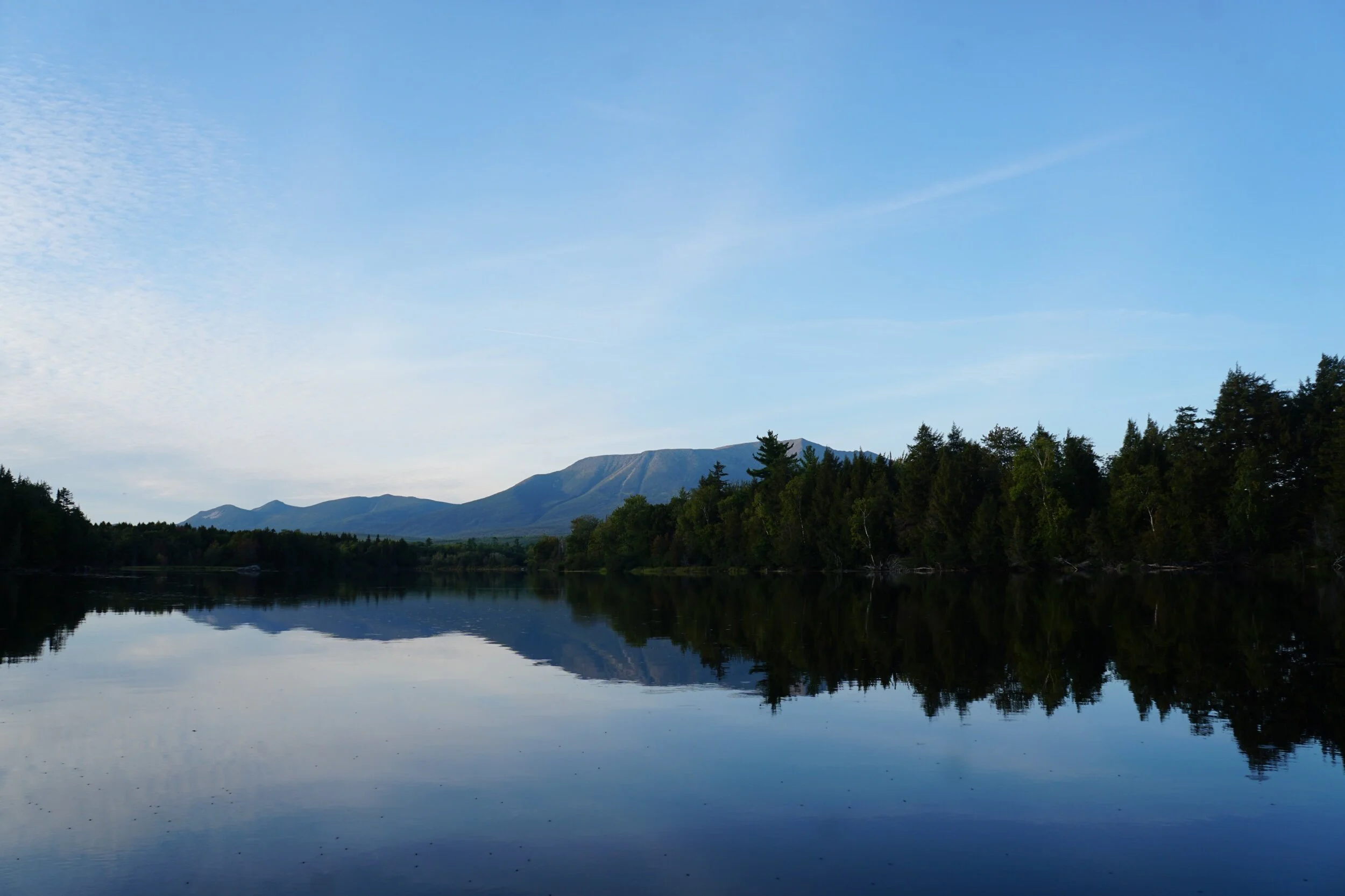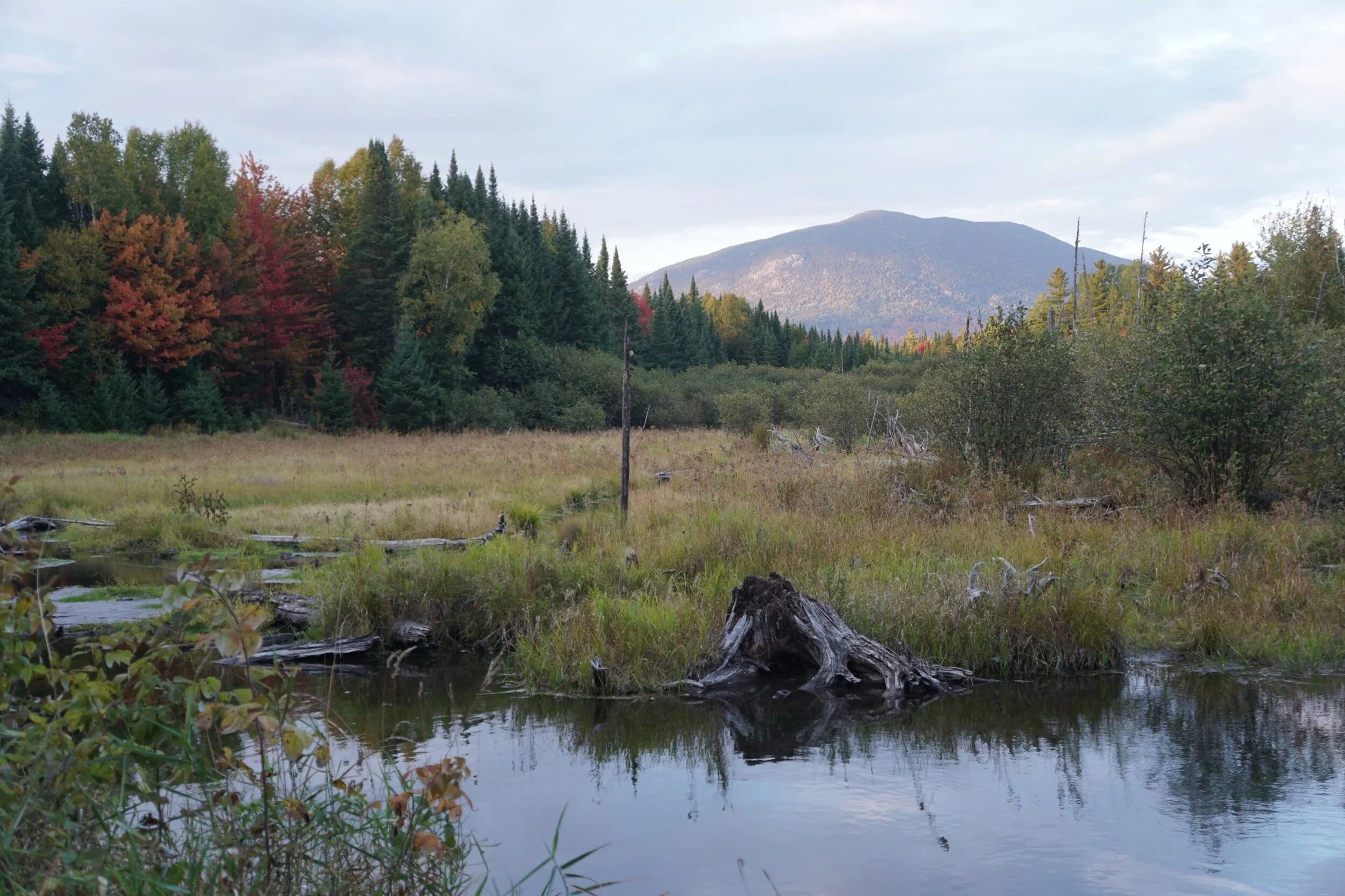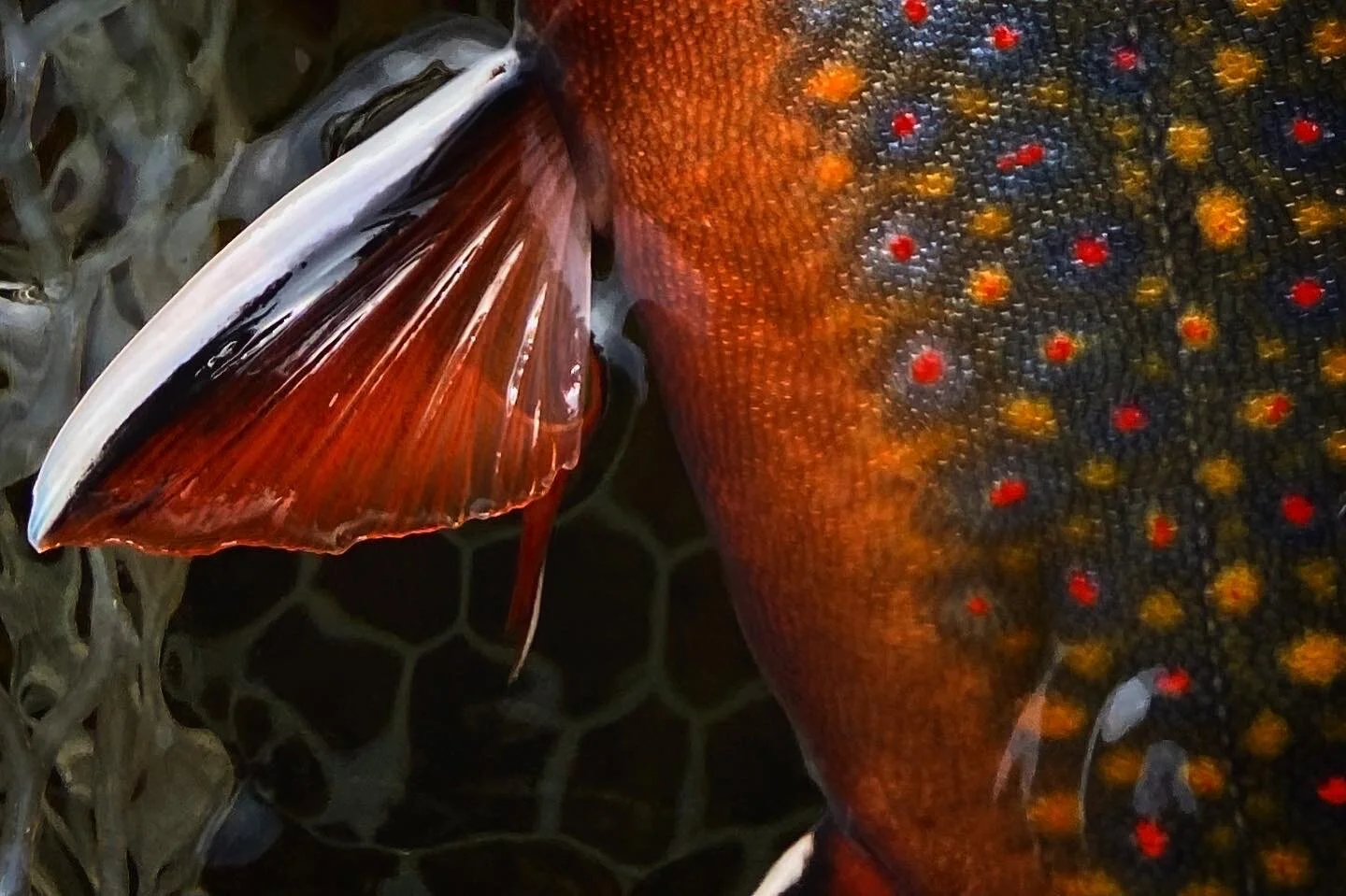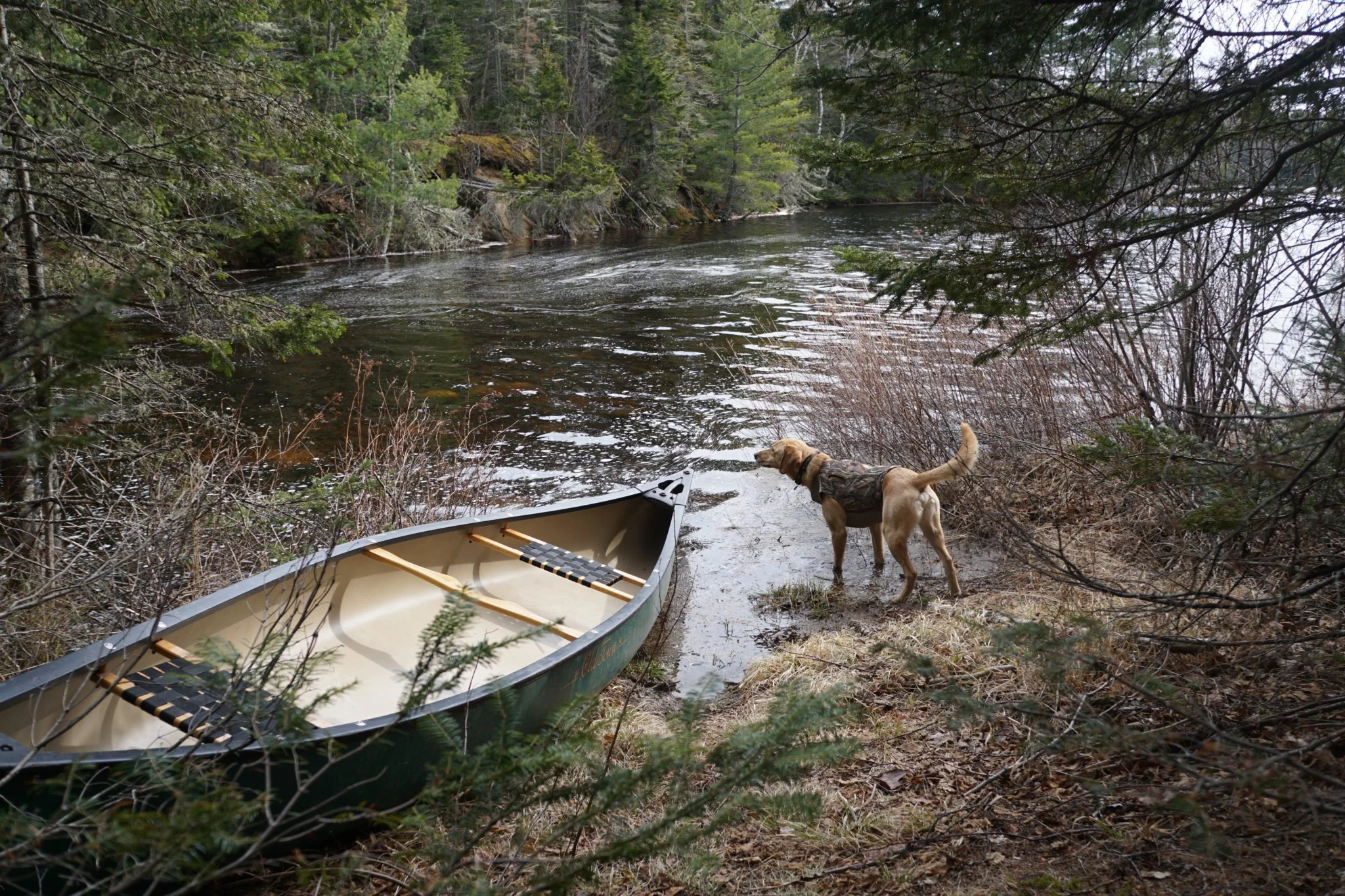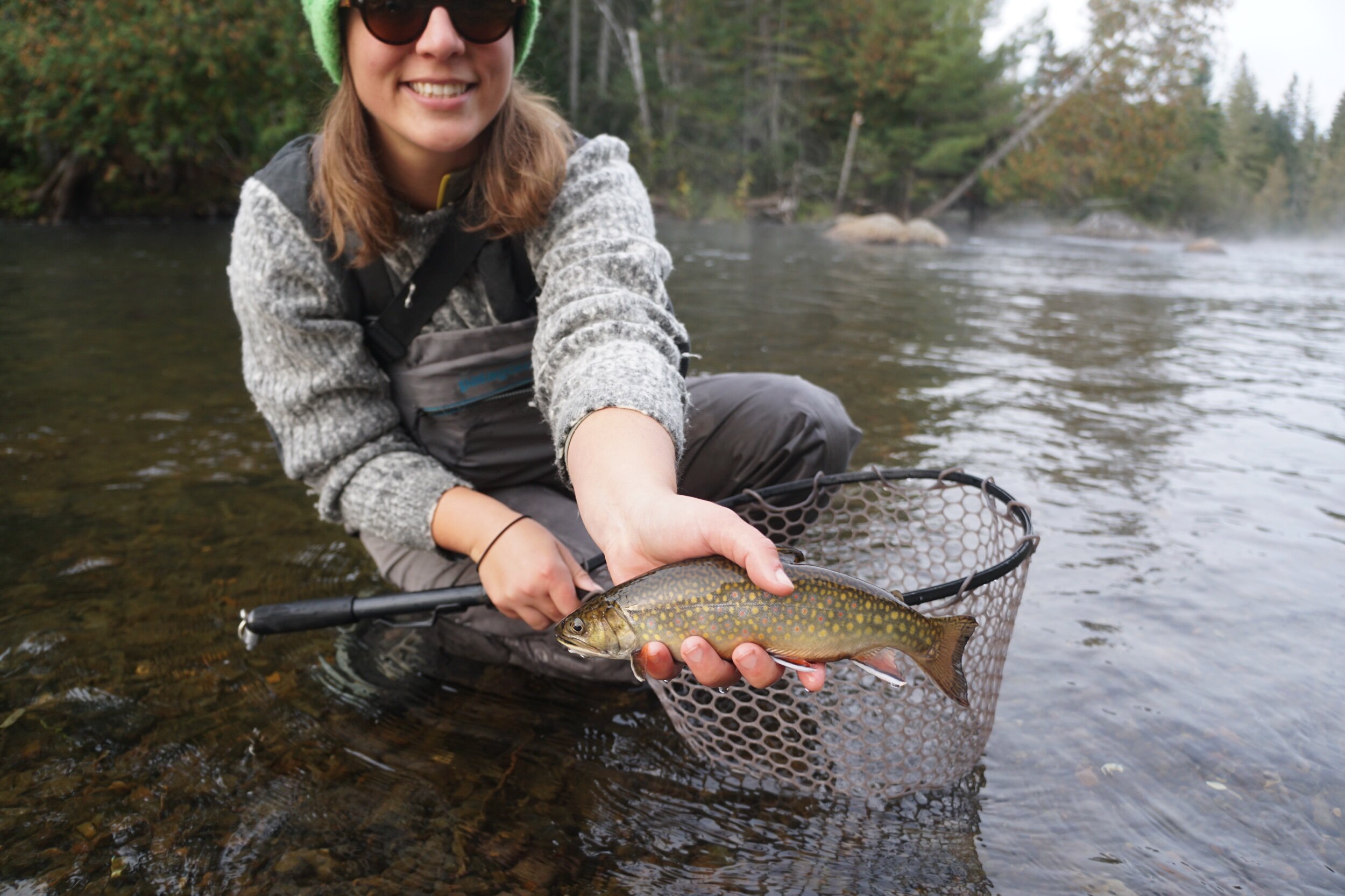A long time ago, a nerdy kid who loved to draw heard the Maine state license plate would be changing from a tired little lobster to a black-capped chickadee, perched in a white pine. That kid — despite not having a car — was giddy by the idea of seeing thousands of birds on the road, especially since lobster was never a favorite food. She mused that someday, maybe she could make a license plate…odd dream for a kid, but this is what happens when you have hours of unstructured time in the woods and road trips.
Canoeing in the Maine woods
Two decades later, a license plate design has become a very real possibility. I’ve been a part of Maine Outdoor Brands since the start of Confluence Collective, immediately drawn in by the collaborative energy and possibility of bringing companies and organizations together around a shared love: the Maine outdoors. It seemed like the perfect way to get to know a new industry, make friends, and nerd out about nature with people who wouldn’t zone out when I gushed about the floating the Androscoggin or asked a million questions about the Allagash. By creating a way for outdoor recreation start-ups to share space with industry giants, a tiny org has lifted the Maine corner of the world beyond what could be achieved individually by involved brands. For me, it’s meant being present at trade shows, punching my way into meetings with brands way above my weight, and challenging goals to be more than I alone could dream up.
Hiking Tumbledown Mountain with friends — great way to spend a summer day
It’s been interesting to progress evolution in my own brand, but also see growth patterns in this community organization as well. My inquiries shifted from watershed insights to questioning the perpetuation of white supremacy in outdoor culture — and MOB was here for it. At first there was the usual verbal support, nodding of heads, agreement in rooms and so forth, followed by the obligatory “what can we do?” Then came tangible challenges: I was ecstatic to work on some illustrations with MOB and at a member event, I was made aware of a vanity plate campaign potential to raise funds for the organization and foster outdoor industry growth here in Maine. I tried my best to quiet the screaming nerdy kid while jumping at the opportunity to collaborate on design, though I doubt the enthusiasm was covert. I found myself drawing scenes from backwoods camping, canoe trips, island kayaking, and questioning how we got this far without paying homage to our native brook trout. What a fun project.
A view of Katahdin from the bow of a canoe in the Kettetegwewick region, known to many as Debsconeag Lake wilderness area. Maine’s copious outdoor recreation areas are well known for stunning mountains, stately conifers, and beautiful rivers. Less often do we consider the role of colonization in our experience of these places.
Behind the sketches, I also heard echos of conversations with friends and collaborators on indigenous land recognition, perpetuated erasure of cultural heritage and contemporary existence, mixed with reverberations of the outdoor industry’s reputation for white-washing the “great outdoors” and dictating appropriate means of interaction, appropriate attire, appropriate nature enthusiasts. The “wilderness” we are painted is one with brush very much in hand of white leadership. I’d been exploring land recognition and decolonized histories of natural spaces for Confluence Collective programming, and was thankful this license plate collaboration was happening at a time in our national narrative where social justice, equity, and racial awareness are coursing through public content. My work with Confluence Collective amplified these themes to incorporate respecting the places we recreate beyond conservation principles [often also curated by whiteness] to include indigenous context, questions of access, and intentional reflection on outdoor culture we foster in these spaces. Other outdoor brands were speaking up on these concepts to varying degrees, some with effective thoughtfulness and others exposing problematic corporate influence, and still more remaining silent. There’s a level of anxiety around doing or saying the wrong thing — an excuse worn out by decades of inaction and perpetuated harm. Knowing silence on this movement was not an option, and battling internally on the problematic performative allyship that comes along with land acknowledgements in public-facing spaces, I centered in on approach and impact: what could a pebble of information create in community ripples?
Finding inspiration in the outdoors is easy to do around Maine
Fly fishing is my primary form of outdoor recreation; we’re incredibly lucky to have native brook trout like this in our waters!
Part of the appeal to a plate design was the potential to reach a wider audience, essentially anyone who registers a car, and have that interaction be one filled with love and appreciation for where we live. This reach also offered opportunity to share information, to challenge each other to make sense of our statehood and learn from our past instead of perpetuating harm. In Confluence Collective programming, these acknowledgements were contextualized in experiences and interactions; could something without personal touch in the time of COVID-19 offer similar benefit? It can seem like a lofty goal to place on a product of governance, but why not have some thoughtful intention in all parts of life — even the mundane? I jotted down an incomplete recognition of Penobscot Nation land rights and noted Katahdin’s sacred status in the design description and sent it along to MOB.
Canoeing around Rangeley in late Spring
What followed were weeks of conversation: would MOB be perpetuating colonial land grab by depicting a sacred mountain for their campaign? Or were we blinded by a colonizer concept of land ownership? Who could come into the conversation to ensure respectful and thoughtful incorporation? What relationships did/did not exist, and how could building relationships help direct not only this project, but the future of the organization? ED Jenny tapped her network, looped in Wabanaki Council contacts, and brought Darren Ranco [Chair of Native American Programs, Associate Professor of Anthropology + Coordinator of Native American Research, University of Maine] into the conversation. We learned about the complicated affiliation of Katahdin singularly to Penobscot Nation, and expanded our view to the full Wabanaki coalition of tribal entities. We swapped language with colonial connotation for something more open, and more focused on the overall intention of our plate design: to focus on our outdoors as a place to love, to investigate ourselves and our world within, to celebrate and enjoy:
“In looking to represent the state outside of the rocky coastlines many visitors know us by, I focused on an outdoor scene that felt most like home, and most like what Mainers see. This scene features Katahdin near the west branch of the Penobscot river: a watershed that spans the width of our state from western mountains to downeast, and remains a critical part of the homeland of the Penobscot Nation. Known as Kettetegwewick, this region holds a canoe route and public land access to Katahdin, known by many hikers as the end of the AppalachianTrail and held as a sacred site by all the Wabanaki Tribal Nations located in what is currently called Maine: the Penobscot Nation, the Passamaquoddy Tribe, the Aroostook Band of Micmacs, and the Houlton Band of Maliseet Indians.
While this is a specific site depicted, the design is intended to be reminiscent of any backwoods canoe trip or hiking trail in Maine with mountains on the horizon, conifers lining the bank, and expansive woods and waters. The famous brook trout and flying predator, the osprey are depicted to represent familiar wildlife encounters. We hope this design encourages Mainers to connect with and be surrounded by nature, experience and investigate, get lost and awaken through an adventure of their own.”
MaineBiz feature of the Maine Outdoor Brands ADVENTURE Plate campaign
The ADVENTURE plate has been proposed as a way to support Maine’s future in outdoor recreation, and celebrate this wonderful place we live. With a goal of 2,000 preorders required to make this license plate a reality, be sure to share this project with those around you and sign up for your own!
Preorders are available here. If we reach 2000 and are approved to move forward into production, funds generated will be used to support programs and initiatives in Maine to increase access to entrepreneurial resources and careers in the outdoor industry. Be sure to keep tabs on Maine Outdoor Brands as they monitor our progress in this campaign and continue to support outdoor entities across the state.
Tight lines,
Bri
